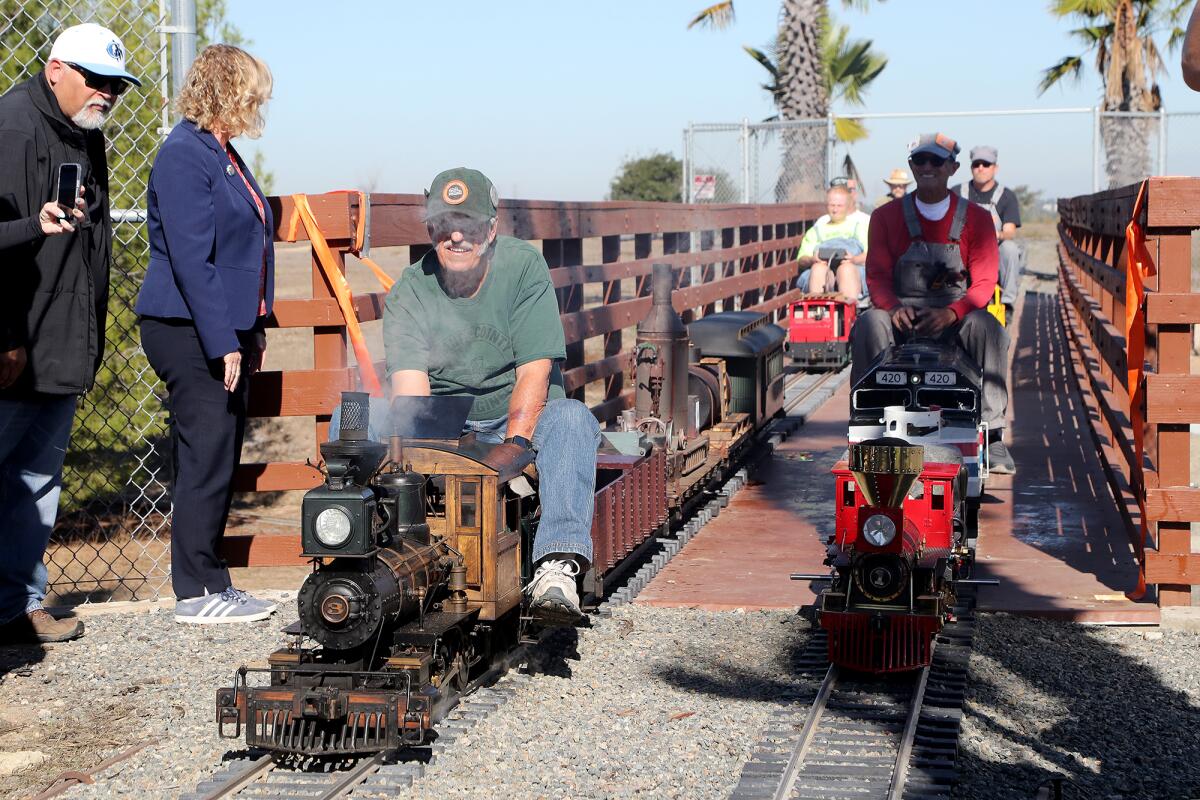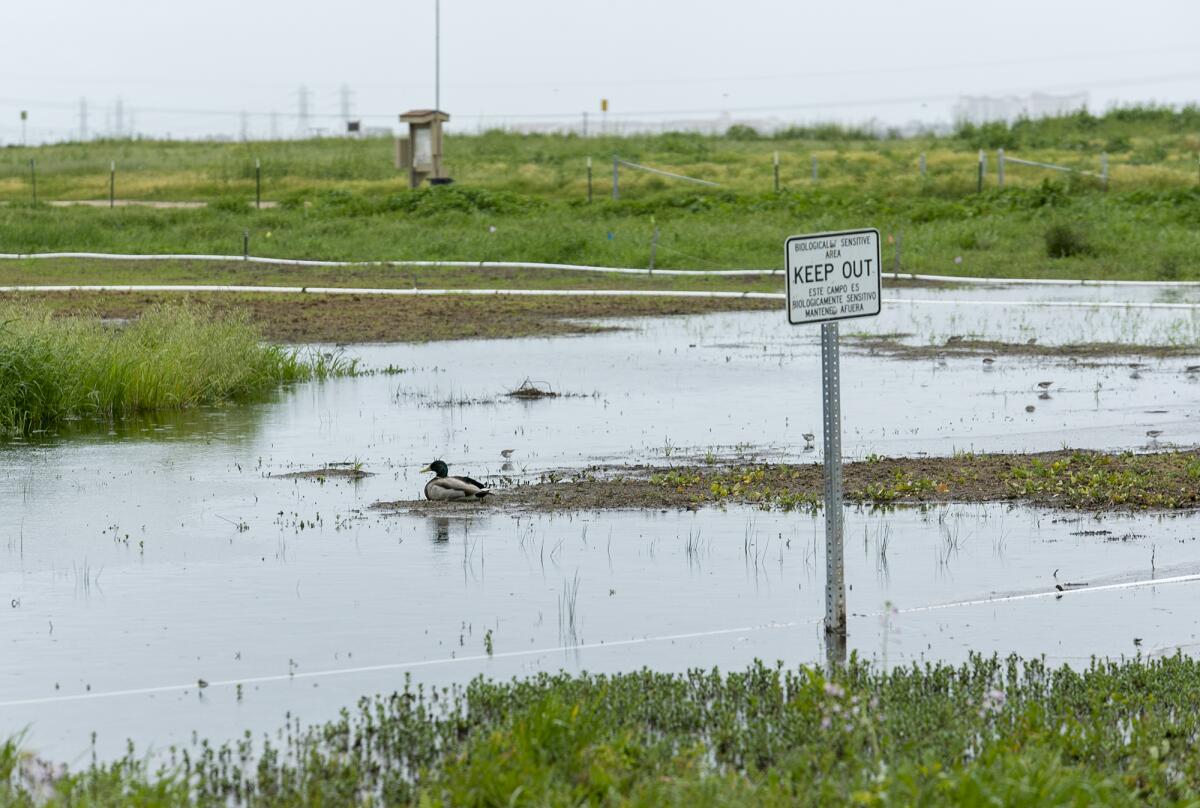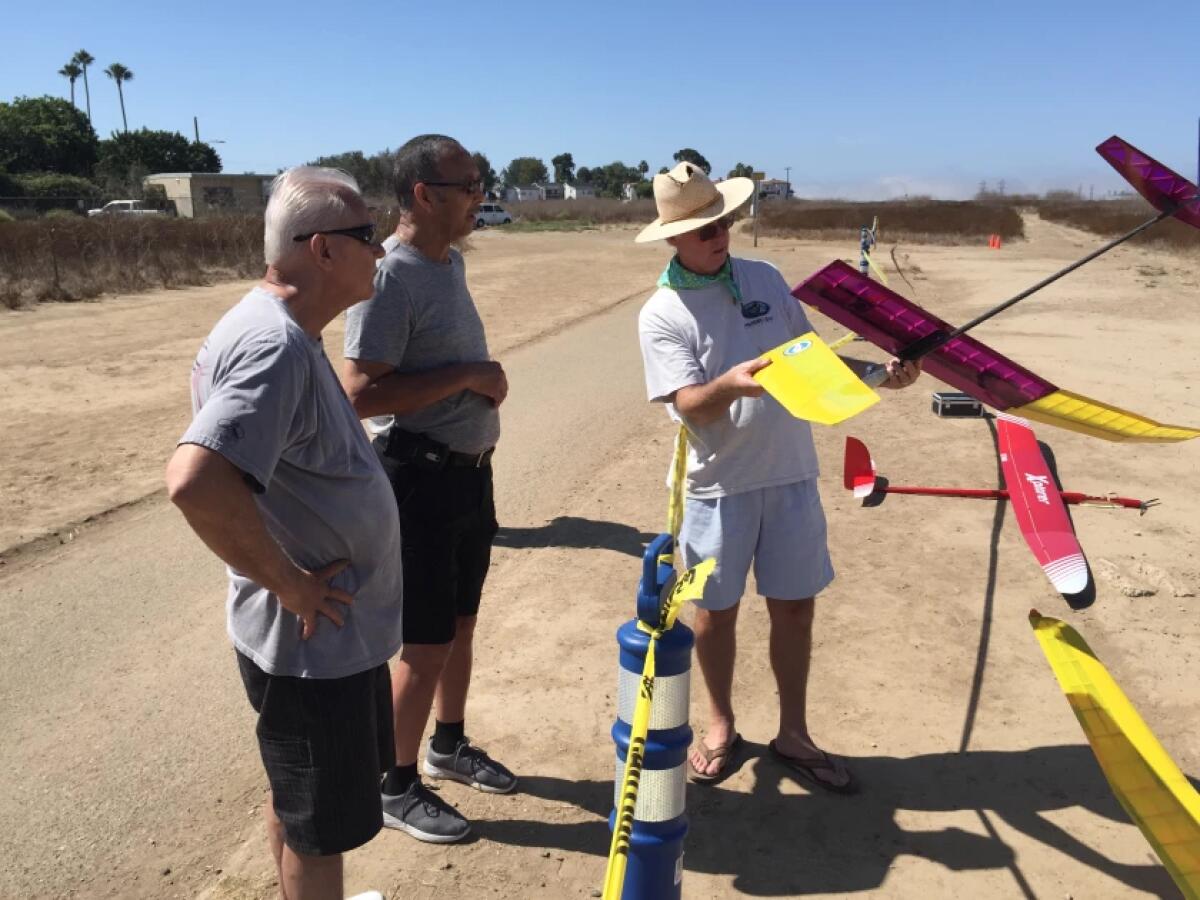Costa Mesa officials attempt to crowd competing views, uses into Fairview Park plan

- Share via
On a sprawling landscape east of the Santa Ana River, Costa Mesa’s Fairview Park encompasses numerous habitat ecosystems, from wetlands and riparian grasslands to coastal sage scrub areas and vernal pools in which dormant life awakens with adequate rainfall.
Yet despite that vastness, city leaders undergoing a master plan process for the 200-acre park are finding the visions for and uses of the space present a crowded playing field of competing and conflicting interests.
Does a park belong to the people who recreate there or the tribal cultures whose ancestors for centuries called it home? Does it belong to the biodiverse species documented there and their caretakers, or should it be subject to the shifting priorities of the leaders of its city of ownership?

Such questions came to a head in a special meeting Tuesday, where officials lifted the lid on years of planning and analysis that have continued at the site, despite a recent shift in parks department heads and Fairview Park administrators.
Consultant representatives from MIG, Inc., overseeing the master plan process, along with restoration ecologist Travis Brooks of Land IQ and biologist Robb Hamilton, who participated in Fairview’s first master plan in 1998, provided an overview of the park’s many resources.
Some 220 different types of birds have been spotted living, nesting or resting in Fairview Park, a biodiversity hot spot that plays host to 197 varieties of plants, including 10 rare species, according to Brooks.
“There are many, many plants and animals that occur here, and that is not because it has open space, but because it has the diversity of habitat types and vegetation communities that provide a home for all these different species,” Brooks said Tuesday.

“Some of these are so special or have been so impacted by urbanization that people have gone to the effort of putting them under some kind of conservation status under the state or federal level,” Brooks said.
A rare complex of vernal pools, which spring to life during sustained periods of rain, provide home to federally protected fairy shrimp, who serve as a food source to multiple migrating birds and a food chain of critters.
Artifacts from indigenous tribes, whose presence dates back to at least 1500 B.C., are still preserved in Fairview’s soil, and the space is regarded as a sacred home to the Tongva and the Acjachemen tribes and their descendants.

But for all the rich ecological and archaeological activity recorded at the Costa Mesa site, Fairview is just as popular among current human users, serving not only recreationalists but model train and aircraft enthusiasts who’ve enjoyed the property for decades under historic city-approved use agreements.
Members of model aircraft hobbyist group the Harbor Soaring Society have flown remote-control planes and gliders on Fairview’s environmentally sensitive west side since 1964, while the Orange County Model Engineers since 1989 have operated 5 miles of miniature train tracks on a 40-acre lot just across Placentia Avenue.
Environmentalists and hobbyists have clashed in recent years, with representatives from both sides clamoring for consideration in the emergent Fairview Park Master Plan.
Their viewpoints were refreshed Tuesday in nearly 50 public comments, primarily provided by members of the plane and train hobbyist groups, as well as from elementary school students to retirees and the environmentally focused nonprofit Fairview Park Alliance.

Hobbyists described their role in protecting the park and introducing its plant and animal life to residents and visitors alike.
“Newport has a Back Bay, Huntington has a beach, and we have a jewel of a nature park, so let’s make sure it retains its natural beauty for our citizens to enjoy and recreate in for generations to come,” said Orange County Model Engineers treasurer Hank Castignetti.
“I love trains, yes, but without native plants and animals we have nothing to show you from our trains but dirt, and you can see that in your own backyard.”
Environmentalists said recreational use, particularly the operations of Harbor Soaring Society’s, interrupts birds’ flight path and threatens sensitive nearby vernal pool activity.

“I’m not against glider planes or flying but they shouldn’t be happening in Fairview Park because they are destroying the habitat,” said Fairview Park Alliance board member Kim Hendricks. “So, maybe you can just move them somewhere else.”
Members of the model plane group countered that their meet-ups are places where people connect out of a passion for aviation, engineering and the natural environment, fostering new generations of interest in STEM-related endeavors.
“For the past 60 years, Harbor Soaring Society has called Fairview Park our home,” said member John Rittenhouse. “If you don’t have another generation of children who appreciate it, they will not protect it when their time comes.”
Model flyers have been forced to curtail operations in recent years, limiting allowable aircraft to nonmotorized gliders and flying only on the first and third Saturdays of each month.

Councilman Loren Gameros said Tuesday he favored a master plan that would allow current uses to continue, even if that required some kind of concessions or modifications.
“If we cannot come to that, we’re going to be backed into a corner to make some very hard decisions, and I’m not going to just push the smallest dog off the cliff,” he said. “So let’s figure this out and work up a solution where everybody gets a little bit of what they want. I want everyone to be pissed off, that way no one feels cheated.”
Tuesday’s discussion was the first public unveiling of the Fairview Park Master Plan. In a second presentation that could take place sometime later this month, consultants will share their initial findings and recommendations ahead of submitting a draft of the plan to the council, which could happen as soon as May 31 and would kick off a long environmental review period.
After hearing nearly two hours of public testimony, council members affirmed their desire for a plan that preserved the park’s cultural resources, while incorporating the goals of environmental stewards as well as hobbyist uses.
“I think there’s definitely an opportunity for us to come together as a city and make it happen for HSS and the [Model Engineers],” said new District 6 Councilman Jeff Pettis. “I also want to see us preserve the wildlife, the vernal pools and the ecosystem. I think we can do both.”
Mayor Pro Tem Manuel Chavez said he was heartened to hear everyone speak about Fairview from a place of love.
“Fairview Park has needed to be defined for a long time — everyone’s passionate responses today demonstrates the need for that,” he said. “If all of us come forth in a common sense way, where we are trying to be collaborative and not confrontational, we can solve this problem.”
All the latest on Orange County from Orange County.
Get our free TimesOC newsletter.
You may occasionally receive promotional content from the Daily Pilot.




